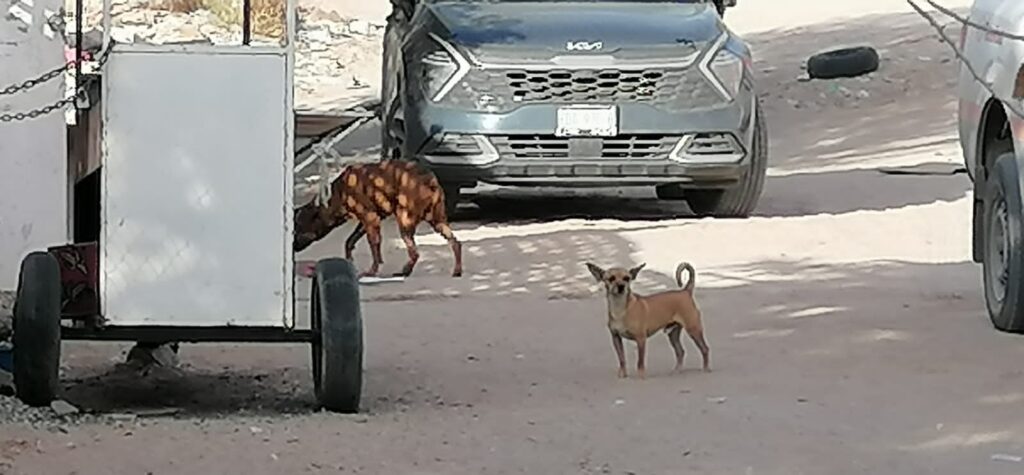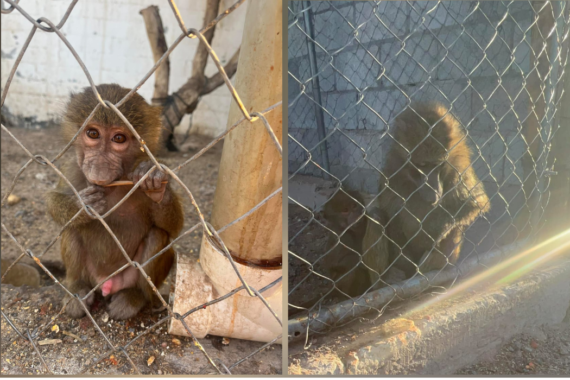Translated by Jesús Ronquillo / Circuito Frontera
Although there is no exact figure, in Ciudad Juárez it is estimated that there are at least half a million dogs on the streets, according to César René Díaz Gutiérrez, director of Ecology of the Municipality.
Click here for the Spanish version
“Half a million easy, at least”, he said in reference to the number of stray dogs in the city.
However, the official explained that this figure includes only dogs that do not have owners, as those that have owners but are found on the streets are not counted.
He commented that the dog population on the streets has led some owners to take drastic measures, such as leashing their pets, which raises concerns about the welfare of the animals.
Regarding precise estimates, Díaz Gutiérrez stated that could be almost 1,700,000 dogs in the locality, although he admitted that an exhaustive census has not been carried out.
He emphasized the need to address this problem, especially since many of these animals can reproduce uncontrollably, further contributing to the stray dog population.
Southeast leads in stray dogs
He noted that most of the complaints come from the Southeast area of the city and that moving the complaints to WhatsApp will allow for better management of the reports.
He said that the Southeast is one of the sectors with the greatest problems, both in terms of stray dogs and complaints, since 80 percent of the reports are in that area.
He mentioned that every day they receive around 60 reports through different channels, although only half of them are official, since many are repeated.
The official indicated that they are also contemplating the creation of a digital platform that will allow a more efficient management of these complaints, which is expected to facilitate the interaction between citizens and local authorities.
He emphasized that neighborhood committees also play a crucial role in managing security situations and issues related to stray dogs, which is why awareness talks have been provided to brigadistas operating in the community.
Although some of these animals may not pose a threat, there is a real problem related to unowned dogs, so sterilization campaigns are a good measure to control the proliferation of dogs, he commented.
He explained that, in the long term, sterilization of pets will help reduce the stray dog population, since many of these animals are given away and then abandoned by their owners.
Mass sterilization for reproductive containment
According to Díaz Gutiérrez, up to now, around four thousand dogs have been sterilized in the city, through campaigns that have been carried out in different neighborhoods of the city.
However, the director of Ecology mentioned that many of these animals had already had one or even two litters before being sterilized.
This reality raises the importance of educating pet owners about the need to control reproduction and take responsibility for their animals.
The official shared an illustrative example of the magnitude of the problem, as he related the case of an owner who took his dog to be sterilized, but she was already in her third litter.
Although he made the decision to spay the mother, the fact that she had already had multiple litters highlights the need for broader education on responsible pet ownership.
He pointed out the need to promote vaccination and medical care for dogs, especially those found on public roads, as the overpopulation of dogs on the street is not only an animal welfare issue, but also raises concerns about public health and community safety.
He explained that there is a project that will involve picking up reported dogs and sterilizing them before returning them to the same area in which they were found, as long as they do not pose a threat to community safety.
In this regard, Roberto Chavez, member of the animal collective “Somos Su Voz”, stated the importance of mass sterilizations in Ciudad Juarez, but also the need to strengthen the enforcement of animal welfare legislation in the region.
He explained that massive sterilizations have a direct impact on the proliferation of stray animals. However, although the Municipality has allocated resources to sterilization campaigns, the lack of sanctions to owners who allow their pets to roam freely undermines the effectiveness of these campaigns.
The animal activist expressed concern that, despite the existence of animal welfare laws and municipal regulations that sanction owners who do not comply with the regulations, the application of sanctions is insufficient.
He noted that this lack of effective enforcement undermines efforts to address the problem of stray animals.
In addition, Chavez stressed that the Chihuahua Secretary of Public Education has a legal obligation to include animal care and welfare education in its educational program for elementary, middle and high school.
However, this responsibility is being overlooked, leaving children and youth without adequate awareness of animal care and the importance of sterilization.
The activist highlighted that this approach is more effective than euthanizing animals, as it takes considerable effort to maintain the reproduction rate, compared to the number of animals put down at the former Anti-Rabies Center.
To illustrate his point, he indicated that, according to estimates, he stated that the Anti-Rabies Center ended the lives of around 3,000 animals per year; however, to generate that number of dogs again, only 300 puppies are required.













